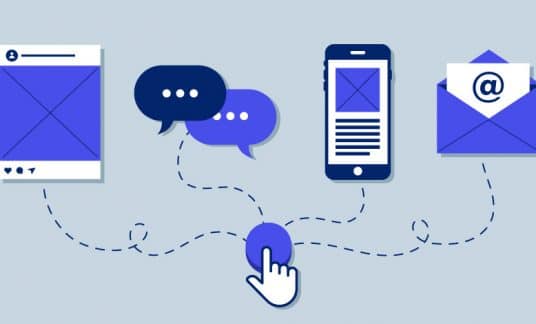Selling high-ticket products or services is different from selling $100 shoes or a $1,000 television. But what exactly qualifies as selling a high-value item? How to sell high-value items is indeed a marketing art.
A high-value sale typically:
- Has a longer sales cycle.
- Involves multiple stakeholders and decision-makers.
- Requires several meetings, follow-ups, calls and other interactions to close the sale.
- Creates a long-term or ongoing relationship between the client and salesperson.
As sales training authority Brian Tracy said, “People don’t buy products, they buy the results the product will give them.”
Here are 8 things you need to know to sell high-value items:
1. Understand Your Customer
This one applies to every type of sale across all industries but it’s important. Don’t overlook the impact of truly knowing your customer.
At a minimum, you need to know:
- Your market and what your current market share is.
- Your target personas (the types of people you’re selling to).
- What motivates your target customers to buy.
- What their interests are.
- Who your competition is.
This is even more important when it comes to wondering how to sell high-value items because the competition is that much more difficult to get those high-end customers.
2. Sell the Result, Not the Product
Echoing back to Brian Tracy, you need to sell your customer on what their life is going to look like after they’ve purchased, instead of focusing on the actual purchase.
It isn’t as simple as selling the benefits of your high-value product or service. Sure, you can spout off easy benefits like, “This software will save you 10 hours a week,” or, “This new machine will double your production speed.” But what do those really mean to your customer?
You need to go further.
Instead of saying it will save them time, suggest ways they can fill that saved time: “Our software saves you 10 hours a week, so you can focus on building and training a sales team to scale your growth quickly.”
Instead of saying your machine can double the company’s production speed, go further with: “Your production capacity will double, so you can increase your profitability by 200% and avoid the bottlenecks you often find yourself in.”
The key is to show how your product or service will solve a problem they’re having or provide a launchpad for growth. Don’t assume those results are implied by your marketing materials or sales pitches. Say it plainly and keep those real benefits front of mind for your customer.
3. Use Storytelling
Similar to the last item, you need to show, not tell, when it comes to selling high-value items. In other words: storytelling.
You can frame your pitch around where your customer is now. It’s bleak. And it’s dark. It’s like Hansel and Gretal finding their way through the bleak, dark woods.
OK, maybe not that dramatic, but you get the idea. Where your customer is now isn’t great. They’ve got some sort of problem to solve.
Enter your product or service.
Step 1: Set the Stage
Say your customer is a burned-out chief executive officer (CEO) who feels trapped where she’s currently at. She can’t expand her business because she’s always busy putting out fires. Overburdened, she spends more time than she wants on meetings, reports and human resource (HR) matters. She feels like they have great ideas brewing in their mind, but no system for putting those visions into reality in the company.
Your customer listens along, thinking, “Yes, this is me!”
Step 2: Make the Choice Clear
Split your story into two paths. The first path: the customer continues the way they were going. The downward spiral of meetings and paperwork continues, leaving them more disillusioned each week. Eventually, the company starts to slip. How can the staff keep their hearts in the business when the CEO has mentally checked out?
Bleak.
The second path: the CEO decides to change her trajectory. She hires a chief operating officer. Also, she invests in HR management software to eliminate most of the pains staff were having and issues from tax slips to vacation requests are now handled seamlessly.
She no longer has to be involved in HR, employee management or any of the lengthy meetings as before. With the time she’s saved, she invented a new product and is actively seeing it through the prototype phase with the design team.
Step 3: The Results of the Investment
She’s reignited her passion for the business and that energy trickles down to everyone on the team. Sales figures reflect the shift in energy. They’re up more than 20% this quarter.
Which type of CEO does your client want to be?
Large purchases are almost always made logically, but don’t discount the effect of emotions on decision making. As well as memory. Facts embedded into stories are 22 times more likely to be remembered, according to research by psychologist Jerome Bruner in his book “Actual Minds, Possible Worlds.”
As said by Carl W. Buehner in 1971, “They may forget what you said – but they will never forget how you made them feel.”
4. Know Your History
Have you made a large software/machinery/real estate/etc. purchase like this before?
Have you considered investing in a tool such as this before but didn’t? What’s changed in your situation from then to now?
You need to ask these questions at the beginning of your sales process.
If your prospect hasn’t made a large purchase before, like the one you’re asking for now, they’re going to need more reassurance along the way.
If your prospect is already used to making large purchasing decisions, they likely won’t need as much convincing that they need the solution. However, they’ll care a lot about you proving how capable your solution is and the company behind it.
5. Do Your Research
Not sure what to price your product or service at?
If you’re selling a product, a good place to start researching pricing is on Amazon.com, Walmart and eBay.
Together, those 3 websites hold 48.7% of the ecommerce market in the U.S., according to Statista.
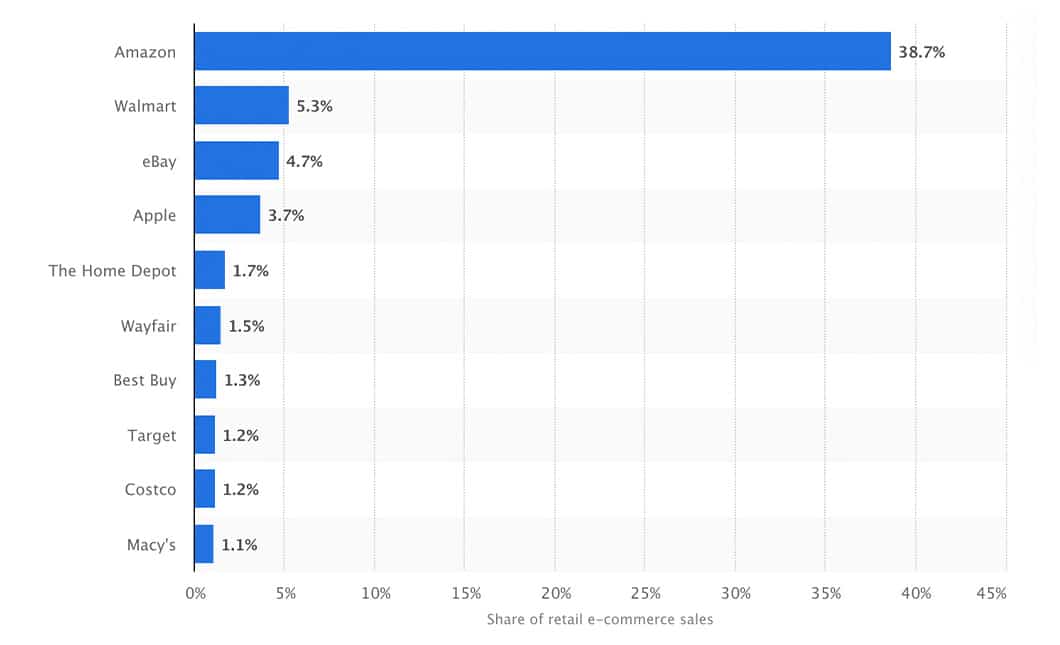
Find comparable products to yours on each of those retailers’ websites and use that to figure out where you fit in. You can start a spreadsheet to record the link, key features and price of your competitors’ products. List at least 5 competing products before deciding where to price yours.
This type of research is to give you an idea of where you could price your product but don’t feel limited by the price ranges you see on these sites.
If your competitors’ products range in price from $3,000 to $10,000, it doesn’t mean you need to price yours at $7,500. Or even $10,000. Maybe it makes sense for your product to be $20,000.
The price itself doesn’t matter. Your ability to sell it and explain why it justifies that price is all that matters. These sites are simply a good way to start that research process.
6. Believe in Yourself
You can’t sell high-value items if you don’t see the value in them yourself.
You’ll need to be passionate about the solution you’re selling and how it will help your customer. You also need to be able to justify the price with a straight face.
That means you need to believe down to your soul that your product or service is worth it.
Genuine belief in what you’re selling goes a long way. It’s a type of confidence that can’t be faked.
7. Choose the Right Marketing Strategy
What works to sell a $30 T-shirt won’t work to sell a $10,000 computer package. But your high-value sales strategy doesn’t need to be super complex either.
Again, it comes back to knowing your buyer, knowing what motivates them to buy and delivering that.
A great example of a high-value product marketing strategy in action is KitchenAid and its famous stand mixers. They’re the most expensive in their field and the company had to find a way to communicate their value to consumers.
KitchenAid focused on 2 key attributes:
1. Versatility
The mixing machines have many optional attachments users can buy to expand their machine’s capabilities, such as making pasta, milling flour and more.
The machines also come standard with multiple mixing spatulas for different types of baking and either a glass or stainless steel bowl. These included extras make the product feel like a premium bundle.
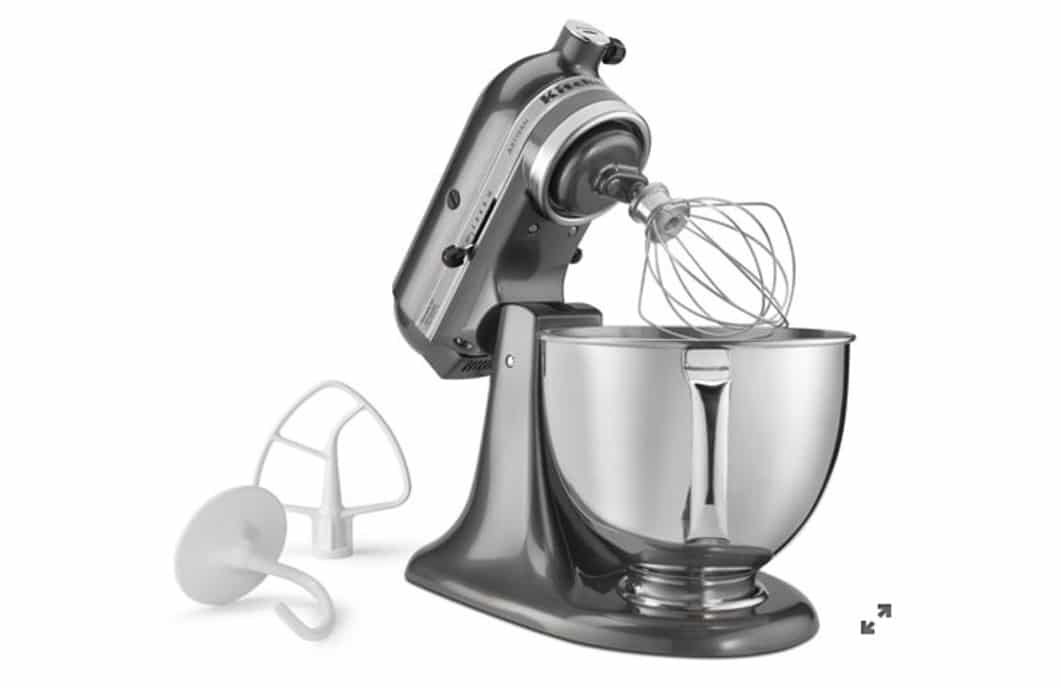
2. Design
KitchenAid hasn’t changed the design of its mixer that much in nearly 100 years. There have been modernizations and additional tools built since then, but the iconic design of the mixer that still sells today was first launched in 1937.
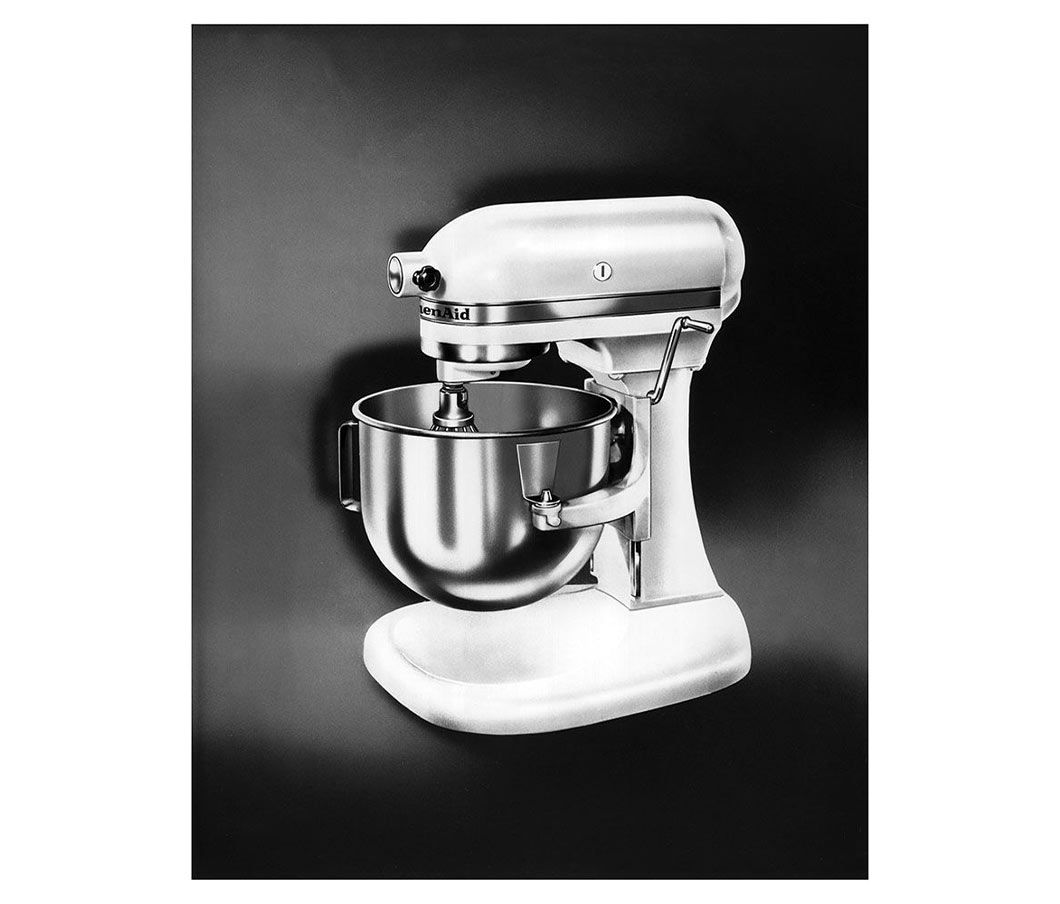
KitchenAid leaned into the retro style of their mixers and now that’s what sets them apart from the cheaper competition. Since the company began making a rainbow of more than 20 colors to choose from, customers have found themselves buying more than one machine simply because they liked the color.
That’s a high-value item that sells itself.
And, the mixer the company names the “Color of the Year” sells for $100 more than the others, based only on the limited-edition color. KitchenAid made the design of their machine equal a social status symbol, which is a surefire way to sell a high-value item.
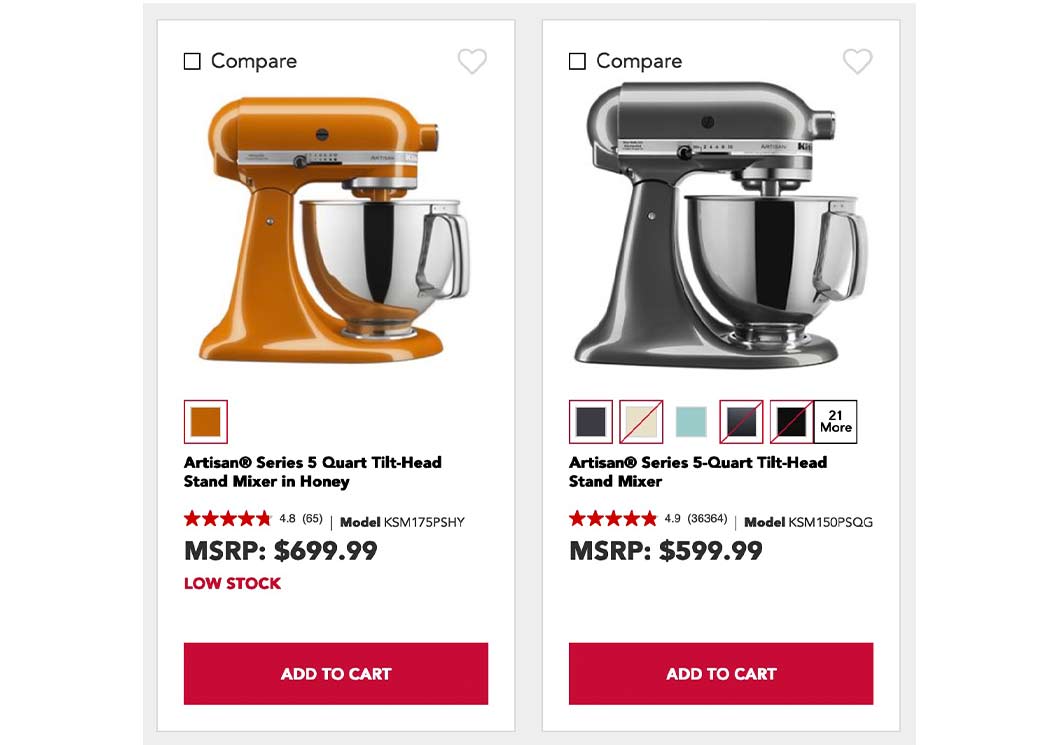
These 2 factors combined take this from being just an ordinary mixer to an heirloom quality piece that consumers are proud to leave out on display on their kitchen counters.
8. Bonus: Ecommerce Listing Tips for High-Ticket Products
If you’re selling high-value items online, ensure each product page includes the following:
1. Multiple Images
If it’s a physical product, include multiple photos from every angle. Show the product on a model or in a scene where it will be used, such as an office desk.
Photos should be clear, bright and professionally taken. A quick iPhone snap isn’t going to cut it when it comes to selling high-value items. Hire a professional and spend time creating a scene or backdrop.
Photos are your most important asset when selling online. The higher the item’s price, the more photos people are going to want before clicking Add to Cart.
Tesla does a great job of showing multiple angles for each part of the car on its website.
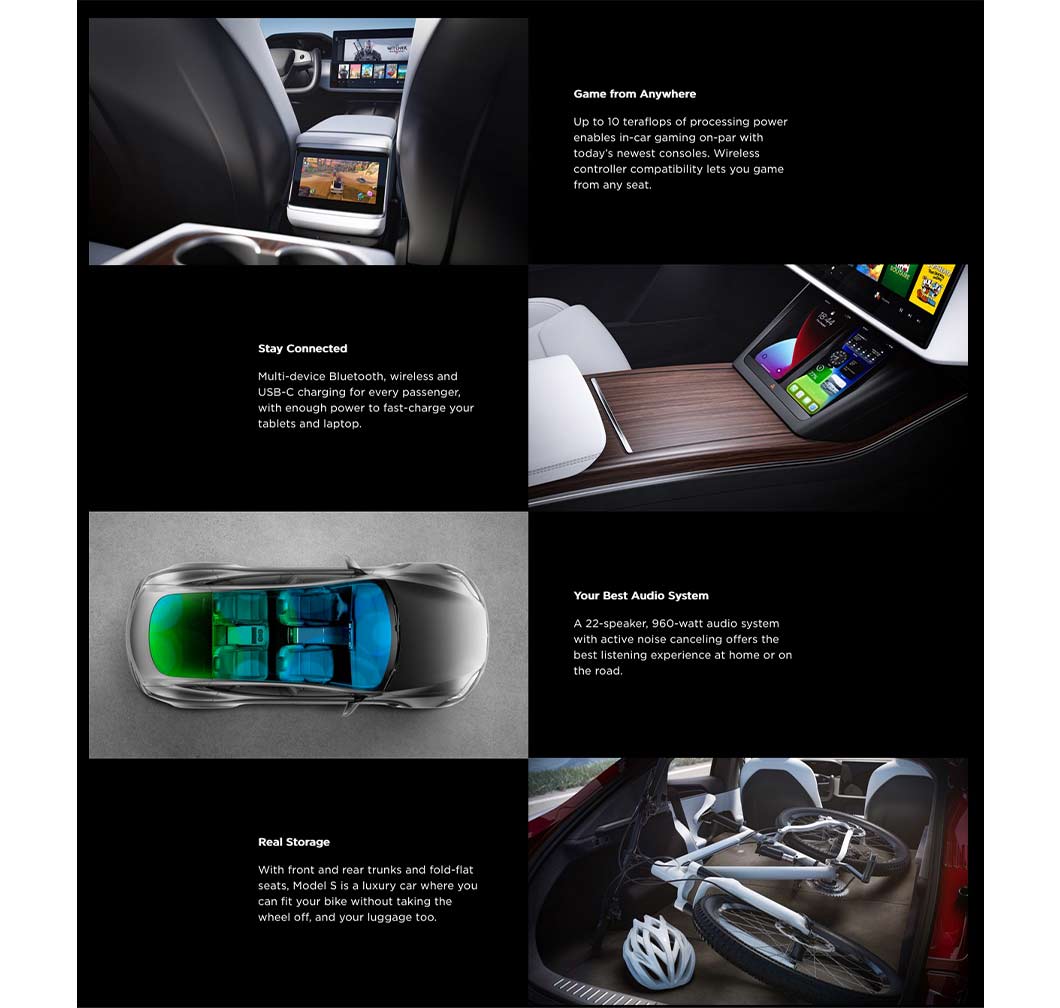
2. Use Video
Yes, photos are the most important thing for your listings… unless you have a video.
Shoppers love videos. It’s their favorite type of content according to a study by Animoto. Instead of reading paragraphs of specs and details about your product, consumers can watch a 30-second video that explains everything they need to know, and shows the product being used in a real-life scenario.
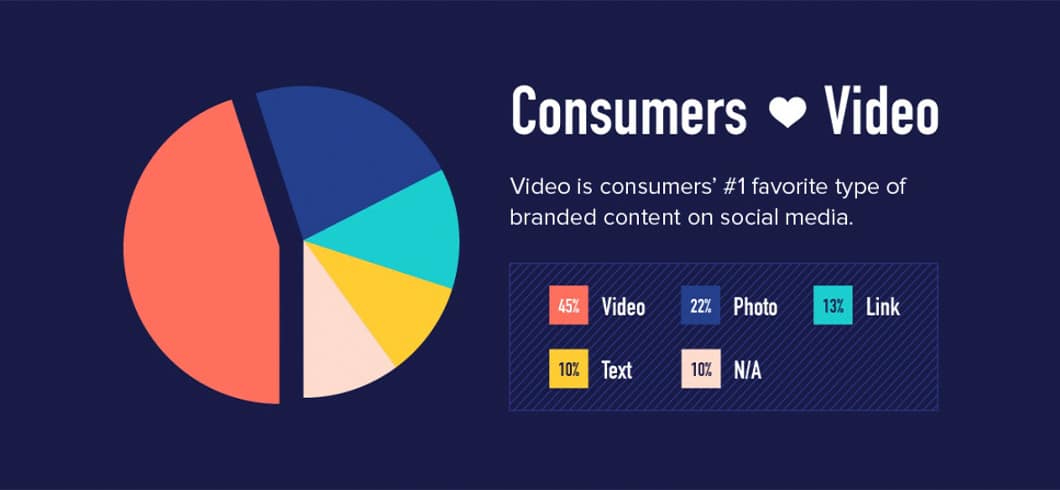
Include a short video of the product in the listing page.
You can expand video marketing further by sponsoring influencer content on platforms like YouTube and Instagram as part of your overall marketing strategy.
3. Showcase Reviews
These days, 97% of shoppers read reviews before making a purchase, according to data collected by Power Reviews. These reviews can be on your website or on other review sites.
Customers want to feel comfortable with their purchase. They want to trust that the item they’re getting is worth the price. Reviews build that trust quickly by playing on the psychological need for social proof.
According to CXL, social proof is based on our innate social needs as human beings. The psychological effects of social proof mean that at our core, we all want to belong. If we see behavior being modeled by others, we want to do the same to conform, to fit in and to build relationships with others.
There’s a reason Amazon features ratings and reviews so prominently in its listings. They work.
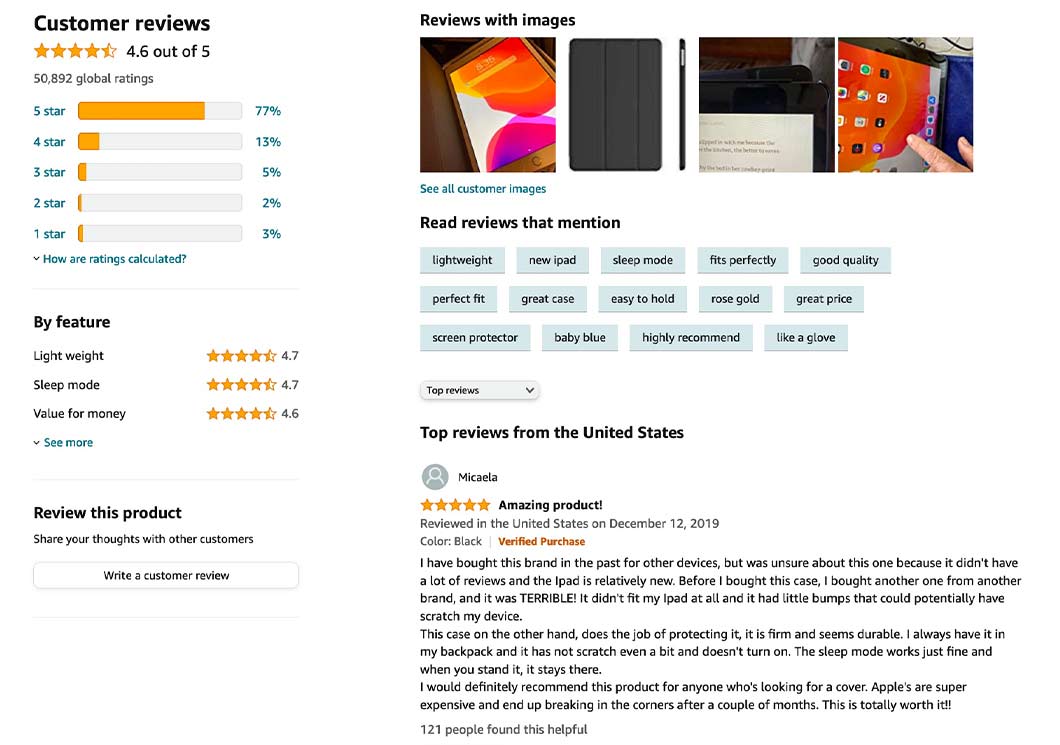
Include a review section on your product page. To get these reviews, set up an automated email to send to customers a few weeks after their order to link them back to your site and encourage them to leave a review.
How to Sell High-Value Items and Services Confidently
Once you understand how to communicate real value to your customer, selling high-value items and getting leads becomes a lot easier.
Remember to always focus on the end game: How does this product or service solve my customer’s problem? How can I use techniques like storytelling and social proof to get them closer to buying?
The best sales pitches, tools and communication won’t be enough if you don’t believe in the value of what you’re selling, though.
If you incorporate these tips with digital sales tools such as a high-performing ecommerce website, your high-ticket sales stand to be unstoppable.







